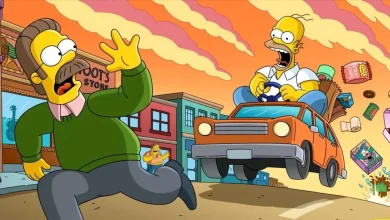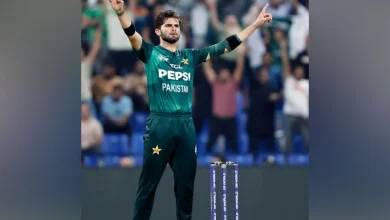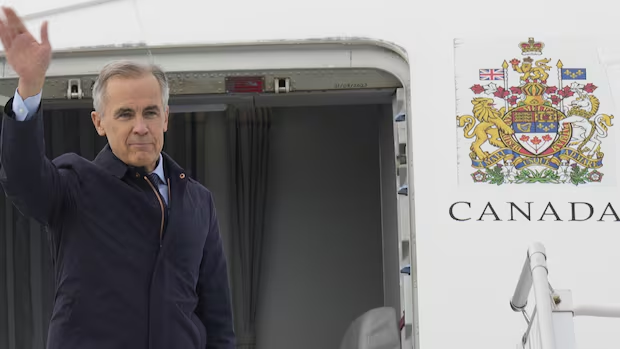In the final days before Edmonton’s election, what’s the best way to reach undecided voters?

Ahead of Monday’s municipal election, many Edmontonians have so far held off making up their minds about which mayoral hopeful will get their vote, recent polling done for CBC News suggests.
With nearly half of those survey respondents undecided on who should be the city’s next mayor, CBC News spoke to some political experts and strategists about how candidates can best try to sway those voters in the final stretch of the campaign.
“Nothing beats traditional door-knocking and going to people’s homes and having one-on-one conversations with them,” said Mandi Johnson, vice-president at Crestview Strategy.
Beyond that, candidates and their volunteers can work to distribute lawn signs or mailbox literature across the city.
Johnson said to make the biggest impact, a candidate would be handing these to voters themselves to foster connection. Barring that, they have to try to make their flyer or sign stand out from the crowd.
One successful example of that, she said, is mayoral candidate Andrew Knack putting his personal phone number on flyers — inviting calls or texts.
Johnson said mayoral hopeful Tim Cartmell’s flyers on hefty paper are well made and also catch the eye. But she wondered if pairing his campaign literature with the council candidates running under his Better Edmonton political party banner could cost him votes.
“I think it’s really risky to put your photo alongside someone else’s,” Johnson said. “We’re not used to seeing that.”
Winning support online
While personal connection is often fostered at the doors, candidates are trying new ways to meet people online too, a space where people are increasingly spending their time.
Christina Romualdo, communications specialist at Champion Communications and PR, said candidates are catering their content to their base, while also trying to garner recognition from new people.
Andrew Knack went to the University of Alberta campus to challenge students to a video game. Political watchers say it’s an example of trying to create connection with young voters who might not be politically engaged. (Andrew Knack/Instagram)
She said an example of that was when — a few days before the advanced poll at the University of Alberta — Knack set up a video game station on campus and streamed his conversations shared with students over the arcade-style soccer game Rocket League.
Romualdo said Knack’s use of livestreams on Instagram and the popular video game streaming platform Twitch are a way to reach a group of young, potentially progressive voters.
“He’s making an effort to reach different voters who wouldn’t normally kind of engage with political content,” she said.
Tim Cartmell’s video on Instagram has over one million views. (Tim Cartmell/Instagram)
Cartmell is also having success online, she said, but it’s catered to a very different base: potentially older millennials who use Facebook and Instagram. She pointed to an Instagram reel about bike lane policy with a million views.
One other candidate who stands out in the way he uses social media is Omar Mohammad, Romualdo said.
Besides having more Instagram followers than any of the other candidates, his trendy videos with original music are garnering hundreds of thousands of views on Instagram and YouTube.
“What he’s tapped into is he’s appealing to people who are looking for change,” Romualdo said.
“There’s a lot of disillusionment with politics. There’s a lot of people who are like, ‘I don’t want a career politician.’”
Omar Mohammad has the most Instagram followers of all the mayoral candidates. But that doesn’t always translate into votes, communications specialist Christina Romualdo says. (Omar Mohammad/Instagram)
Facebook’s Ad Library, a searchable collection of ads on Facebook apps and services, including Instagram, also shows Mohammad has spent $46,000 on the platforms in the last 90 days.
That’s as much as all 2021 mayoral candidates combined.
Cartmell and Walters spent $29,500 and $25,300 respectively. Knack has spent a mere $149.
Vincent Raynauld, an associate professor at Emerson College who studies political communication, said these advertisements to boost social media posts can make a big difference in trying to grab attention in an increasingly fragmented online space.
But social media followers do not necessarily translate into votes.
“That is the $100,000 question. Is that social media content really getting people to go out and vote?” Raynauld said.
In the final days of the campaign it’s less about messaging and more about bonding with supporters and getting them to the polls, he said.
“People when they are about to vote, the last thing they think about is: ‘Am I comfortable voting for this person? … Do I believe in that person?’”





